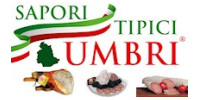The Monte Subasio regional park occupies a surface area of 7,442 hectares around Assisi, Nocera Umbra, Spello and Valtopina. The park comprises the entire area around Mount Subasio and around the city of Assisi itself. Due to the abundance of places associated with the life and works of St Francis included within the boundaries of this reserve – including a number of hermitages and mountain shelters used by the saint and his brothers to pray – the Parco Regionale del Monte Subasio is also frequently referred to as the Parco di San Francesco.
ENVIRONMENT
The plant life of Umbria can be divided into three altitude areas, the lowest of which is largely occupied by extensive olive plantations. The middle level is densely wooded and includes the famous ilex forest around the Eremo delle Carceri and the beech forest of Macchione, while the highest level is made up of conifer forests and summer grazing meadows for sheep and cattle.
The region is known for its abundant and varied bird life.
THE TRABOCCO SPRINGS
These springs, which gush from one of the flanks of Mount Subasio, originate deep within the mountain’s chalky substrata. The porous nature of the terrain ensures that rainfall is channelled into springs that form in the basin beneath. The Trabocco springs feed the rivers Chiona and Tescio.
THE MORTARI AND KARST PHENOMENA OF MOUNT SUBASIO
The characteristic karst topography of Mount Subasio displays a number of dolines, sinkholes and underground cavities including the so-called mortari – basin-shaped depressions – such as the Mortaro Grande, the Mortaiolo and the Mortaro delle Trosce.
Near the Eremo delle Carceri the many natural caves have functioned as places of prayer and retreats for mystics and hermits through the centuries, including St Francis.
------------------
"Umbria...Cuore verde d’Italia. Umbria delle acque e dei Parchi, Agenzia di Promozione turistica dell'Umbria, Perugia, pg. 72, by kind permission.
Our network:
Wednesday 20 November 2024
Parco Regionale del Monte SubasioAll'inizio |

| THEMATIC HOLIDAYS | go |
• Ancient documents and illuminated manuscripts
• Renaissance Umbria
• Umbria the Poet’s Muse
• Umbria With the Kids: Perugia’s Città della Domenica
• Golf & Art in Umbria
| WINE AND FOOD | go |
• Typical Umbrian dishes
• Umbrian cuisine
• Typical Umbrian produce, where to buy and where to taste
• Typical Umbrian food
• Wine Tours in Umbria
• Umbrian Wines and Regional Wine Trails
• Enoteche, vinerie and wine bars in Umbria
• Umbrian Wines
• Wineries and wine tasting in Umbria
| ITINERARIES | go |
• Contemporary art in Umbria
• The female saints of Umbria
• Benedictine monasteries
• Ancient castles and fortresses
• Guided tours and itineraries in Umbria

| PARKS AND NATURE RESERVES | go |
• Lake Trasimene
• Parco Fluviale del Tevere
• Parco Regionale del Lago Trasimeno
• Parco Regionale del Monte Subasio
| WHAT TO SEE & DO | go |
• Cooking courses in Umbria
• The Nahar adventure park, enclosed within one of Italy 's largest alpaca farming areas, offers tourists the chance to spend a day experimenting new sports and generally having a good deal of fun in an unparalleled natural setting!
• PIERMATTEO D’AMELIA and the Renaissance in Southern Umbria
• FRANTOI APERTI Following the DOP Umbria quality olive oil trail
• Wedding in Umbria
• MAP of UMBRIA to travel in Umbria
• Tourist guides of Umbria
• Quality produce - sustainable success stories
• Oil mills and producers across the region Umbria
• Academies, Schools in Umbria and Italy
• Exhibition Perugino, divine painter
• Itineraries & Packages
Booking.com
• Beauty Farms in Umbria
• Wellness in Umbria: opportunities for tourists
• Spiritual Retreats in Umbria
• Dermocosmetici Oro of Spello for protecting your skin
• Wellness in Umbria
• Rafting
• Paragliding and Hang-Gliding
• Horse Riding in Umbria
• Golf in Umbria
• Umbria by Bike
• Getting married in Umbria
• SM.MA. rental of equipment, marquees and gazebos for catering and banqueting
• Company meetings in Umbria
• Venues and Entertainers for Events in Umbria
• San Gemini - Centro Congressi
• Park Hotel ai Cappuccini in Gubbio
• Events and Cerimonies in Umbria – Deals and Offers
• Conferences and Conventions – the Advantages of Choosing Umbria

• Textiles and Lace-Making in Umbria
• Deruta Ceramics
• Cabinetmaking in Città di Castello
• Woodcarving in Umbria
• Ceramics in Umbria Art and Tradition
• The Ceramics of Deruta

| BEAUTY & WELLNESS | go |
• Wellness in Umbria: opportunities for tourists
• Spiritual Retreats in Umbria
• Dermocosmetici Oro of Spello for protecting your skin
• Wellness in Umbria
| SPORT | go |
• Paragliding and Hang-Gliding
• Horse Riding in Umbria
• Golf in Umbria
• Umbria by Bike
| WEDDING | go |
| MICE (MEETING INCENTIVES CONFERENCES EVENTS) | go |
• Company meetings in Umbria
• Venues and Entertainers for Events in Umbria
• San Gemini - Centro Congressi
• Park Hotel ai Cappuccini in Gubbio
• Events and Cerimonies in Umbria – Deals and Offers
• Conferences and Conventions – the Advantages of Choosing Umbria

| HANDICRAFT | go |
• Deruta Ceramics
• Cabinetmaking in Città di Castello
• Woodcarving in Umbria
• Ceramics in Umbria Art and Tradition
• The Ceramics of Deruta









